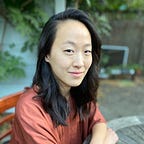Career Transition to UX Design: Tips for Resumes
Job Search Part 1
Career Transitions are full of challenges, are very time intensive, and sometimes very discouraging. If you are transitioning your career to UX/Product design and you find yourself thinking, “no one is hiring entry level designers” or “I just need someone to give me a chance”, just know I have been there, and this article is for you. I promise the challenges are worth it.
I have mentored many designers over the years, even when I was only 6 months into my own UX career transition and just starting my first freelance project. (I believe there is much we can learn from each other no matter what our career or life stage.) These tips are collected from frequently asked questions, and questions that new designers often don’t realize they can and should ask.
My goal for this article and the “Job Search” series is to help you consistently focus your energy on what is most effective to getting a full time job, and to identify what may be distractions to your job search.
This is part 1 in a 3 part series:
Part 1: Tips for Resumes
